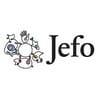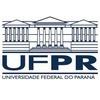Organic Acids and Essential Oils Combined with an Antibiotic Growth Promoter to Improve Gut Health and Nutrient Digestibility in Challenged Broiler Chickens
Published: April 27, 2021
Source : M.L. Moraes 1, D. Detzler 1, A. Kraieski 2, M.S. Vieira 1 and E. Santin 2 / 1 Jefo Nutrition Inc., Canada; 2 Federal University of Paraná, Brazil.
There is increasing pressure for the use of antibiotic growth promoters (AGPs) in poultry diets to be discontinued or reduced. In this context, the search for natural additives such as organic acids (OA) and essential oils (EO) has increased. Previous studies have reported beneficial effects on gut health of supplementing poultry diets with these natural feed additives. As in many countries the use of AGP is still allowed and the adoption of programs combining the effects of AGPs with feed additives is a reality in the field, the objective of this study was to investigate the dietary supplementation of protected organic acids and essential oils P(OA+EO) in combination with an AGP in Eimeria spp. and Clostridium perfringens challenged broiler chickens.
A total of 256 male broiler chickens Cobb 500 was allocated in cages from 1 to 28 d of age. The experiment followed a randomized design, with 4 replicates of 16 birds for each one of the 4 treatments: negative control (NC), positive control (PC), AGP (Enramycin at 10 ppm) and AGP + P(OA+EO). Except those of the NC group, all birds were challenged with Eimeria spp. at 1 d and Clostridium perfringens at 11, 12 and 13 d. The diet was corn and soybean-based (Rostagno et al., 2011). Analysis of ileum morphology and CD4+ and CD8+ lymphocyte counts was performed at 7, 14, 21 and 28 d and ileal digestibility at 28 d. Gut health was assessed by the I See Inside scoring system (ISI), according to Kraieski et al. (2017).
Compared to the NC group, the PC group had higher ileum villus necrosis at 14 d (P < 0.05), tissue congestion at 21 d (P < 0.05), infiltration of inflammatory cells in the lamina propria (P < 0.05) at 28 d, as well as CD4+ and CD8+ counts at 7, 14 and 21 d (P < 0.01), showing that the challenge was efficient in inducing an inflammatory response. Compared to the PC group, the AGP + P(OA+EO) had lowest ISI score for villus apical necrosis (P ≤ 0.02) at 14 d, for congestion (P < 0.01) at 21 d, for infiltration of inflammatory cells in the lamina propria at 28 d and, higher counts of CD4+ and CD8+ at 7, 14 and 21 d (P < 0.01). At 28 d, the ileum cell dynamic of the AGP + P(OA+EO) group suggested a recovery of intestinal mucosa due to an increase of enterocyte proliferation, higher number of CD4+ cells and a reduction of CD8+ cells (P < 0.01) compared to the PC group. In addition, the AGP + P(OA+EO) group had higher coefficients of digestibility of DM (P < 0.01), CP (P ≤ 0.08), and energy (P < 0.01) compared to all other treatments. The metabolisable energy was also higher for the AGP + P(OA+EO) group (184 kcal difference to the AGP group; P < 0.01). The greater number of alterations in the ileum observed in the ISI analysis and by immunohistochemistry for the PC groups compared to the NC group indicates that the challenge model was efficient. The supplementation with a blend of P(OA+EO) combined with an AGP seems to ameliorate the negative effects on gut health parameters caused by the Eimeria spp. and C. perfringens challenges in addition to improving dietary nutrient digestibility. Therefore, the combination of the additives would be an efficient management in the gradual transition process towards to the total antimicrobial withdrawal.
Abstract presented at the 30th Annual Australian Poultry Science Symposium 2019. For information on the latest edition and future events, check out https://www.apss2021.com.au/.
Kraieski AL, Hayashi RM, Sanches A, Almeida GC & Santin E (2017) Poult. Sci. 96: 1078- 1087.
Rostagno HS, Albino LFT, Donzele JL, Gomes PC, Oliveira RF, Lopes DC, Ferreira AS, Barreto SL & Euclides RF (2011) 3rd ed. UFV, Viçosa, MG, Brazil.
Related topics:
Mentioned in this news release:

JEFO Nutrition Inc.

Show more
Influencers who recommended :
murat çelebiRecommend
Comment
Share
30 de agosto de 2021
If we want to use as preventive measure, then when and how many days we can use this blend AGP+ P(OA+EO) in broiler.
Recommend
Reply

Would you like to discuss another topic? Create a new post to engage with experts in the community.

















